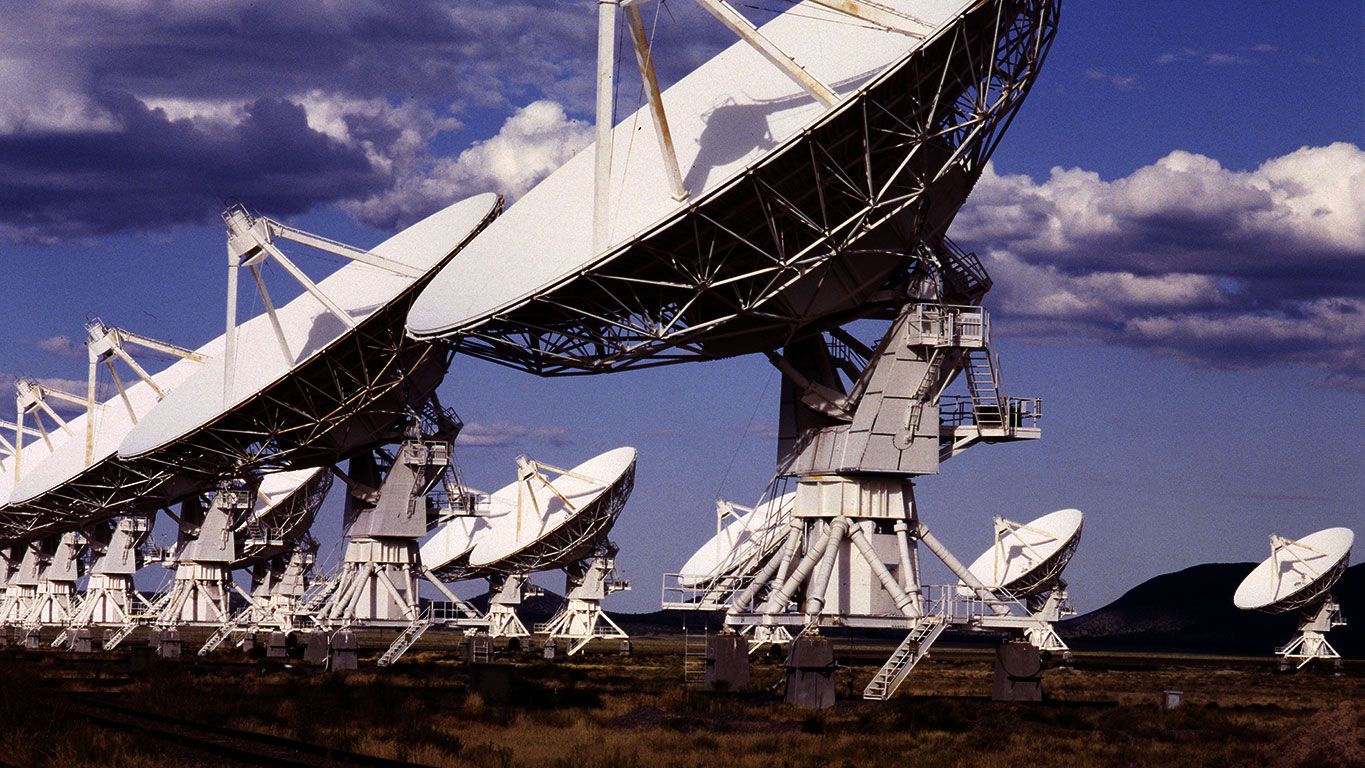
It is the world’s largest radio telescope array operating at microwave frequencies. It’s also where Jodie Foster heard an alien signal in the 1997 movie “Contact”.
But now the Jansky Very Large Array – known to its fans as the VLA – will be part of a massive ongoing SETI search, sans Jodie. The SETI Institute will be part of a team using this instrument in “piggyback” mode for extended periods of cosmic surveillance. In an acknowledgement of a time-honored SETI tradition, the observing setup – being developed by astronomers in both the U.S. and Canada – is canonized with a catchy acronym: COSMIC (Commensal Open-Source Multimode Interferometer Cluster.)
The VLA offers several important capabilities for SETI. To begin with, it’s big. The 27 antennas that comprise the instrument, each 25 meters in diameter, are spread over 22 miles of flat, New Mexico terrain (it was once a Pleistocene lake.) These have a combined collecting area equivalent to a single-dish antenna 130 meters (426 feet) across. There are very few radio telescopes that sport that much metal mesh, and sensitivity is always a plus point for SETI, where signals are likely to be weak. In addition, each VLA antenna is fitted with 8 cryogenically cooled receivers covering the radio spectrum from 1 to 50 GHz. There are also receivers that can operate below 1 GHz, down to 54 MHz, which is a band used on Earth for television broadcasting.
The plan for observing with the VLA, proposed by the international COSMIC consortium, including Andrew Siemion and others at both the SETI Institute and the University of California, Berkeley, is to install a “splitter” that feeds a copy of the VLA digital data stream from the 27 antennas to locally installed SETI equipment. That equipment consists of software and hardware that will compute 64 different beams on the sky and slice the incoming cosmic static into hundreds of millions of narrow-band frequency channels.
A big advantage of this effort is that observations can be conducted 24/7, providing a lot of time on a world-class instrument. The trade-off is that the basic observing parameters – central position on the sky and frequency band – are set by the radio astronomers using the VLA for their own research. In other words, someone else has control of the telescope. But this is arguably of small concern in a SETI campaign because both the location and transmitting frequency of any galactic civilization are only presumed, not known. Yes, randomly pointed observations are like shots in the dark. However, if you take shots for years at a time, the chances of hitting something improve.
In fact, the shots are not random, but are aimed at star systems within about 900 light-years. As noted, COSMIC will compute 64 synthetic beams on the sky (all falling within the wide, single beam of an individual antenna), using well-known techniques of radio interferometry. These beams are helpful in two ways: On the one hand, they can be used to decide whether a signal found in one of the beams is of extraterrestrial origin or is merely human-produced interference. For example, orbiting satellites communicate with Earth by emitting the type of signals that SETI seeks. But they are (relatively) strong and will show up no matter where an antenna is pointed. Any promising signal found in one of the 64 beams is automatically sought in the others. If it appears in more than one, it can be ruled out as a possible alien transmissions.
But a second beneficial aspect of the multiple beams is that, via computation alone, they can be centered on selected positions on the sky. These positions will be chosen from a curated version of the existing GAIA database, which includes several billion nearby star systems. In other words, the COSMIC observations will, in fact, be a massive, targeted search.
Once up and running, it is estimated that COSMIC SETI will observe about 40 million galactic star systems in two years’ time. It will be the most comprehensive SETI observing program ever undertaken – with high sensitivity and a huge target list.
In the current vernacular of the young, “cosmic” is used as a synonym for something that greatly exceeds the ordinary. It is a moniker that COSMIC is poised to earn.
-Seth Shostak
